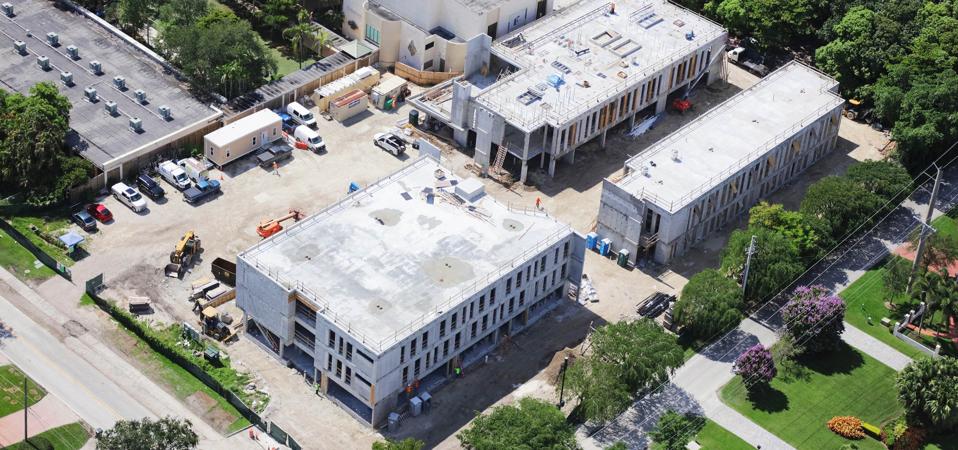
Construction projects involve large investments of money and time, and because many owners don’t … [+]
Amicon
Construction projects require large investments. Mistakes and delays can be exceptionally costly. Shepherding a construction project from start to finish to make the most of the investment and limit errors is a daunting task, and doing so requires experience and dedicated time. The current COVID-19 pandemic makes the process all the more challenging. All these factors and others are helping increase awareness of the importance of owners’ representatives.
The role of an owner’s representative is to serve as the project leader, to strategize and manage all facets of a construction project in accordance with the owner’s goals. That leadership is vital given many owners don’t have the internal resources to handle the job, says Adam Mopsick, CEO of real estate and construction services firm Amicon Management. Uninformed decisions can mean selecting inappropriate contractors, working from inaccurate initial budgets and mismanaging the construction process, Mopsick adds.
“The owner’s rep is a knowledgeable and experienced advisor who represents the interest of the owner and guides [the owner] throughout the project life cycle,” adds Rick Pena, principal of Prime Group Management, which oversees and orchestrates real estate building projects. “The owner’s representative arms the owner with unbiased and objective information so the owner can make informed decisions. Typically, owners do not have the time or experience to oversee their own projects, and their opportunity cost is too high” to do so.
The owner’s representative mitigates risk in several ways, Pena reports. These include identifying and sidestepping mistakes in sites or specifications, eliminating workflow bottlenecks before they can become problems and managing expectations through accurate time and cost forecasting. Owners’ representatives also mitigate risk by maintaining clear, consistent project communication with all stakeholders, and holding them accountable.
Pandemic issues
The many hurdles related to the COVID-19 pandemic have made project management and strategy more essential than they’ve ever been. “There are unknowns around materials supply, permitting and COVID requirements, as well as the financial stability of many local professionals,” Mopsick says.
“Additionally, the virtual work environment has complicated the organizational process . . . Costs are now more critical than ever, and the margins for success and failure are small, so mistakes can be magnified.”
The pandemic’s travel and proximity hurdles have also heightened the interest in owners’ representatives, Pena said. “An owner’s rep offers a great convenience during the pandemic for clients that cannot be closely involved in the day-to-day activities of a project, but need to make sure forward progress is made where possible,” he noted.
Whether during or after the pandemic, clients should realize a swift return on investment from appointing an owner’s representative, Mopsick says. The return often comes through an analysis of the construction budget and projections to identify savings opportunities. Value engineering for alternative scope suggestions, structuring of general contractor contracts and change-order reviews and negotiations are examples.
“Whether it’s crafting a strategy to avoid the wrong path, or the selection and management of the proper team to prevent cost and schedule overruns, project leaders complete a thorough analysis of a client’s project to craft a custom strategy in the best interest of their financial goals,” he adds.
What’s ahead
Looking to the future, while the fundamentals of an owner’s representative’s work aren’t expected to change much, technology will exert an influence on those fundamentals, Pena believes.
“With the continuous advancement of technology and the improvement and automation of certain processes, there will be even more information to manage and new digital tools at our teams’ disposal,” he says.
“The way we create drawings has changed . . . The variety of project management software has increased. The owner’s rep’s technical savvy will need to rise to match the pace [of] technical advancements.”
